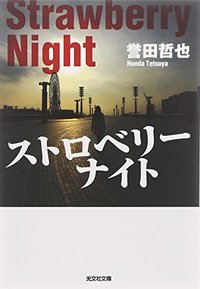Nous utilisons des cookies pour améliorer votre expérience. Pour nous conformer à la nouvelle directive sur la vie privée, nous devons demander votre consentement à l’utilisation de ces cookies. En savoir plus.
CRUEL EST LE CIEL (VO JAPONAIS)
EAN : 9784334746681
Édition papier
EAN : 9784334746681
Paru le : 20 oct. 2009
14,50 €
13,74 €
Disponible
Pour connaître votre prix et commander, identifiez-vous
Notre engagement qualité
-
 Livraison gratuite
Livraison gratuite
en France sans minimum
de commande -
 Manquants maintenus
Manquants maintenus
en commande
automatiquement -
 Un interlocuteur
Un interlocuteur
unique pour toutes
vos commandes -
 Toutes les licences
Toutes les licences
numériques du marché
au tarif éditeur -
 Assistance téléphonique
Assistance téléphonique
personalisée sur le
numérique -
 Service client
Service client
Du Lundi au vendredi
de 9h à 18h
- EAN13 : 9784334746681
- Date Parution : 20 oct. 2009
- Disponibilite : Disponible
- Barème de remise : NS
- Nombre de pages : 438
- Format : H:105 mm L:154 mm E:17 mm
- Poids : 238gr
- Résumé : In this second installment of the author’s best-selling Reiko Himekawa series, a severed left hand is found in a minivan abandoned on a dry riverbed. Himekawa and her team join the investigation. The hand is quickly identified as belonging to building contractor Ken’ichi Takaoka, and from the amount of blood spilled in the van, it is presumed that he was killed. Searches fail to turn up the rest of the body, however, and the mystery deepens when a childhood friend shown a photo of the victim declares, “That’s not Takaoka.” Further investigation reveals that the “Ken’ichi Takaoka” identified as the owner of the hand was actually Kazutoshi Naito, believed to have killed himself 13 years before. Naito had lost his wife in a traffic accident that also left his son, then five years old, paralyzed; in a scheme to provide for his son through a large insurance payout, Naito staged his own death and took over the identity of Takaoka. The real Takaoka had killed himself after becoming embroiled in land consolidation troubles with the Tajima-gumi yakuza syndicate. A limbless torso is then dredged up from the river and determined to be Naito’s, but Reiko is not convinced. The DNA test is repeated at her urging, and this time the results show that the torso belongs not to Naito but to a yakuza with connections to the Tajima-gumi named Makio Tobe. Tobe had been instrumental in obtaining Ken’ichi Takaoka’s family register to enable Naito to assume the dead man’s identity, and in the years since, he had never let Naito forget it. Tobe had also been engaged with Tajima-gumi in an insurance fraud scheme by which people who owed money to the syndicate were forced to kill themselves in suicides staged as accidents in order to collect enormous insurance payouts. Among the victims of this scheme was the father of Kosuke Mishima, now 20, whom Naito has been looking after for the last nine years; unable to be with his own son, Naito had taken Kosuke in after his father’s death and raised him as if he were his own. Learning that Tobe had discovered his secret and was now extending his tentacles toward Kosuke, Naito killed Tobe. Then, after dismembering and disposing of the body, he cut off his own hand and left it in the minivan to fake his death under the assumed identity of Ken’ichi Takaoka. This still leaves the question of where Naito is now, minus his left hand. Reiko recalls a homeless man she spoke to in the riverbed on the first day of the investigation. When she hurries back to the scene, she finds him, now dead; in his remaining right hand he grips a photo of himself and the young Kosuke at an amusement park. About the Author Tetsuya Honda 誉田 哲也 Tetsuya Honda (1969–) was born in Tokyo and graduated from Gakushuin University. He notes that he was influenced a great deal by manga and anime when he was growing up. He began playing bass in rock bands in middle school, eventually writing his own lyrics and music and attempting to make it as a musician, but threw in the towel at age 30. He got his feet wet as a writer reporting on combat sports, of which he is a fan, and then began trying his hand at fiction, which he considered an extension of his songwriting. His literary debut came in 2002 with Ayakashi no hana (Ethereal Flower), which won an Excellence Award in the Mu Mystery Novel Grand Prize contest on its way to being published. The following year his novel Akusesu (Access) received the Special Prize in the Horror and Suspense Grand Prize contest. He soon joined the ranks of Japan’s best-selling authors with police novels featuring female cops—the Jiu trilogy (2005–06) and the ongoing Reiko Himekawa series that began with Sutoroberi naito (Strawberry Night, 2006). His youth novels Bushido shikkusutin (Bushido Sixteen), which evolved into a series, and Shippu garu (Girl Like the Wind) have also been well received.


